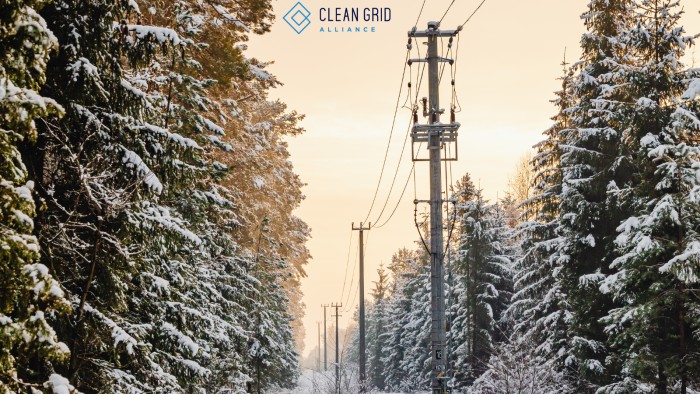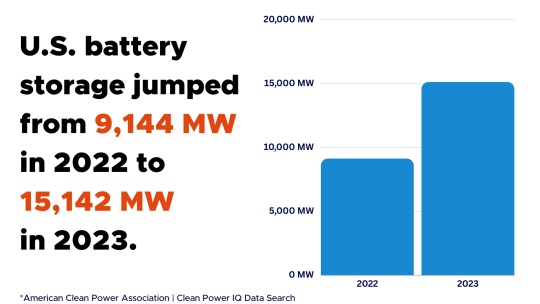Winter Weather Tests Reliability; Grid Prevails
 | Alex Thompson, Communications Associate |

 | Alex Thompson, Communications Associate |
Winter has arrived. After the warmest December on record, January kicked off the new year with a cold, hard reality check. Winter storm Heather ushered in subzero temperatures, gusting winds, and - in some places - mounds of snow. For most, it was a time for staying in, cranking up the heat, and waiting it out. For those in the energy world, all eyes were on the grid, anxious to see how well it would hold up against the increased demand.
The grid held strong. In part, because winter winds whipped for days. The Midcontinent Independent System Operator (MISO) set a new wind record on January 12th, and 18 hours later wind had its fourth-biggest day. In the face of energy reliability concerns, renewables delivered.
What is Energy Reliability?
Reliability is one of the key tenets of the clean energy transition. As we continue to shift more of our energy generation to renewables, how can we build a more reliable, efficient, and flexible grid? It's a question that we are always asking, especially in the face of extreme weather. Large weather systems, like Winter Storm Heather, and Elliot and Uri before that, have moved across the country in recent years putting extreme strain on the electric grid. Fortunately, much has been learned about the importance of a robust, well-integrated grid to manage extreme circumstances. Transmission operators and utilities are doing more to plan ahead and alert folks of the need to conserve energy (turn down thermostat, turn off unneeded lights, unplug things you're not using, etc,) during such events. The fact is, every little bit helps.
At the end of the day, reliability comes down to two main factors: having enough energy to meet consumer demand at any given time and having the transmission lines to deliver that energy where it needs to go.
The Rising Tide of Energy Storage
Historically, energy generation and consumption have been instantaneous; generation must match consumer demand, 24/7/365. This raises a natural question: when the wind doesn't blow and the sun doesn't shine, or when coal piles freeze up and natural gas is not available, where will our energy come from? New energy storage technologies provide a solution. Battery Energy Storage Systems (BESS) are being installed at a record pace. In 2010, the United States had 47 megawatts (MW) of installed energy storage. Today, that number has surpassed 15,000 MW, and energy storage capacity is expected to double by the end of 2024.
By storing energy when it is abundant, especially charging batteries from low-cost renewables, there are numerous benefits we can unlock. Energy storage provides a proactive, flexible approach to addressing reliability concerns. When there's an extreme weather event and electricity demand rises, batteries can release energy to ease the pressure on generators. Conversely, when there are times of excess generation, that energy can be stored for later use.
When coupled with renewables, energy stroage thrives. Take Texas, for example. With renewables and storage, the Lone Star state avoided a repeat of Winter Storm Uri in 2021. A recent Fast Company article explains that Texas now has 25 percent more wind, and three times as much solar and battery storage as it had three years ago. These diverse resources were critical to giving the Texas grid, ERCOT, the resiliency it needed to handle Winter Storm Heather. Doug Lewin of Stoic Energy, a consulting firm focused on the Texas energy transition, stated that solar provided record output of 14,000 megawatts on January 16, accounting for nearly 20% of the grid's needs on one of the coldest days of the year.
Transmission: The Key to Unlocking Reliability
Transmission is the tie that binds our grid together. A better-connected grid allows for energy to be "shipped" from places where there's an excess amount of generation to areas that have increased demand. For example, during this month's bout with winter weather, the Southwest Power Pool (SPP) imported 6.8 GW of energy to help meet its increased energy demand while PJM Interconnection exported nearly 12 GW.
Subscribe to our newsletter for the latest on energy & our work
To help strengthen the grid and support the transfer of power across the footprint, MISO approved a portfolio of 18 transmission lines known as Tranche 1 of the Long-Range Transmission Plan, in 2022. These lines, once constructed, will support the delivery of 53,000 MW of low-cost, clean energy resources. The Long-Range Transmission Plan is the largest transmission portfolio in the nation. And we know that the Multi-Value Projects approved in 2011 and put in service helped transfer energy across the MISO footprint to SPP in prior winter storms.
Last fall, Minnesota was notified that it will receive $464 million from the Inflation Reduction Act for transmission lines that will improve the power grid's ability to provide cost-effective, sustainable energy to communities throughout the Midwest. The Joint Targeted Interconnection Queue transmission lines include five lines on the "seams" between regional grid operators MISO and SPP. These lines will help relieve significant congestion on the existing transmission system and will unlock 30 Gigawatts of renewable energy.
Diversification in our generation sources is more than an investment strategy; it's the heart of reliability. The extreme weather events we have experienced in recent years point to the necessity of having a robust, integrated transmission system that enables regional transmission operators to assist neighbors in times of crisis. When storms move across the country, not everyone is affected at the same time. With proper planning, a variety of resources to draw from, and an integrated transmission system, the grid will be better equipped to deliver on its promise to provide low-cost, reliable electricity every hour of every day. The Texas success story with wind, solar, battery storage and increased transmission proves that renewables can provide a stable and reliable grid, even in the most challenging conditions. And in the Midwest, we're well on our way to doing the same.
Other Resources:
Top 5 Benefits of Energy Storage
Transmission: The Tie that Binds
Reliability Fact Sheets